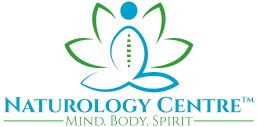Massage Therapy Styles & Health Benefits
Our Moncton massage therapy services help people relieve symptoms or heal injuries, treat certain health conditions, and promote overall health and wellness. It's a fact massage therapy services were used by 44 percent of Canadians over their lifetimes, which means approximately 66,880 people in Greater Moncton have benefited from massage therapy. That's higher than chiropractic care (42%), yoga (27%), acupuncture (22%), and relaxation techniques (25%). Also, massage's proven health benefits are recognized by all major insurance providers in New Brunswick, and we're seeing an increasing number of people, particularly baby boomers that value their health and wellness.
Our Moncton Massage Therapy Styles
Our Moncton massage therapy team employs a variety of stroke styles, ranging from long, smooth strokes to short, percussive strokes. Some therapists use oils and lotions, while others do not. A massage session can last anywhere between 30 and 90 minutes at our location. Our massage clients may remove clothes for their massages because fresh 100% cotton linens and draping are used; however, you can keep your underwear or other undergarments on if you prefer.
Consider the following questions before deciding on the best massage therapy clinic for your needs. Do you want a massage to relieve stress and relax? Or do you require pain relief, improved mobility, or assistance with a specific medical condition? Before booking a massage, be sure to review your therapists' online profiles to learn more about them and see which styles they use. Our Moncton massage therapy team usually employs more than one style during a session. They may also tailor your message to your age, medical condition, or any special needs or goals you may have. It is beneficial to complete your massage therapy intake form online before your appointment so that your therapist can prepare to provide customized massage treatment.
Swedish Massage
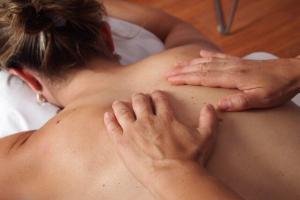
Swedish massage therapy is one of the most common types of massage, likely because it is therapeutic and relaxing. Soft, long kneading strokes and light, rhythmic tapping strokes on the topmost layers of muscles are used. This promotes improved blood circulation and some joint movement as well. Swedish therapy can be relaxing and energizing because it relieves muscle tensions while helping correct muscle imbalances. It may even be beneficial after an injury.
The four most common Swedish massage strokes are:
Effleurage: a French word that means "to skim" or "to touch lightly on," is a series of Swedish massage strokes used to warm up the muscle before deep tissue work with petrissage. This gentle, stroking movement is used at the start and end of a facial or body massage.
Petrissage: is a Swedish technique in which deep pressure is applied to the underlying muscles. Petrissage movements include kneading, wringing, skin rolling, and pick-up-and-squeeze. They are all carried out using the padded palmar surface of the hand, the surface of the finger, and the thumbs.
Friction: a massage technique with force applied across soft tissue structures with deep, circular movements. Frictions are an effective method for breaking up adhesions, breaking down scar tissue, and realigning tissue fibres.
Tapotement: often used in Swedish massage, involves rhythmic percussion typically performed with the edge of the hand, a cupped hand, or the tips of the fingers. Tapotement is classified into five types: Beating, Slapping, Hacking, Tapping, and Cupping.
Myofascial Release Massage
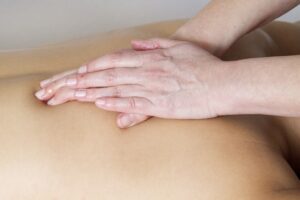
Your therapist will massage the myofascial gently and feel for stiff or tight areas. (Myofascia should be pliable and elastic.) With light manual pressure, the therapist will begin massaging and stretching the areas that feel stiff. The massage therapist then works with the tissue and supportive sheath to relieve pressure and tightness. This process is repeated several times on the same trigger point and other trigger points until the therapist feels the tension or adhesions have been completely released.
Chair Massage
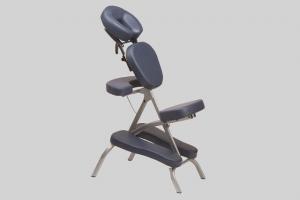
Have you ever wanted a chair massage at a county fair, music festival, beach or conference? Or perhaps you're lucky enough to work for a company that offers its staff regular 15 to 20-minute massages as a perk. We now provide corporate massage services to help de-stress, relax, and reward your team members! Chair massages are conveniently offered at your location; participants are fully clothed and seated in a portable, specially designed, comfortable chair. Our massage therapists usually include a neck, shoulders, back, arms, and hands massage; your employees will feel rejuvenated!!
A chair massage can also be an excellent option for those clients that have trouble laying down or prefer this position. (please note this within your booking comments to ensure availability)
Pregnancy Massage
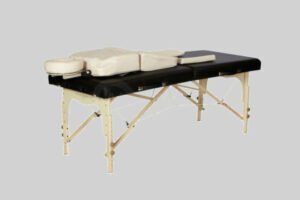
Your body undergoes significant changes during pregnancy. Pregnancy massage can aid in these changes by reducing stress, arm and leg swelling, and relieving muscle and joint pain. If medication and other medical options are limited, massage may be beneficial. The massage therapist will assist you in becoming comfortable with this type of massage by using various massage pillows.
Shiatsu Massage
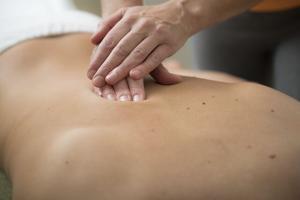
Shiatsu is a Japanese word that means "finger pressure." The therapist applies varied, rhythmic pressure to specific body points for shiatsu massage. These are known as acupressure points and are thought to be essential for the flow of chi, the body's vital energy. According to proponents, Shiatsu massage can help relieve blockages at these acupressure points. This service is available as part of our enhanced acupuncture.
Instrument Assisted Soft Tissue Management (IASTM)
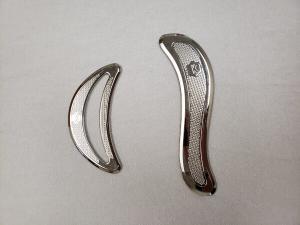
A Registered Massage Therapist can elect to complete additional training that enhances their practice and benefits clients. One of these programs is Instrument Assisted Soft Tissue Management or IASTM; it's performed using a unique blade-like tool (M2T blade). A massage therapist can use this specialized unsharpened blade tool to apply pressure to specific points on the client's body to stimulate fibroblasts and scar adhesions, also known as "fibrous tissue." At Naturology Centre, select practitioners may use this specialized instrument during sessions. Regardless of why this instrument is used example, fascia work, muscle scraping, or trigger points it's included within a massage therapy session at no additional cost! IASTM is neither painful nor is it considered an invasive therapy.
Areas IASTM may benefit:
• Bursitis
• Carpal Tunnel Syndrome
• DeQuervain's Syndrome
• Epicondylitis
• Muscle sprain and strain
• Myofascial Pain
• Neck, back, hip, ankle Pain
• Reflex Sympathetic Dystrophy - RSD
• Rotator Cuff Tendinitis
• Surgical and Traumatic Scars
• Tendinitis (rotator cuff, patellar, tibialis, heel, achilles)
Deep Tissue Massage
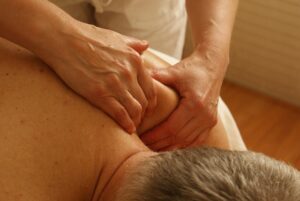
Deep tissue massage is ideal for addressing painful, stiff "trouble spots" in your body. The massage therapist uses slow, deliberate strokes to apply pressure to deep layers of muscles, tendons, or other tissues beneath your skin. While less rhythmic than other types of massage, deep tissue massage can be therapeutic, relieving chronic patterns of tension and assisting with muscle injuries such as a back sprain.
Sports Massage
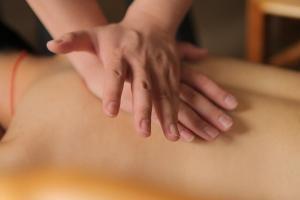
A sports massage focuses on the muscle systems used for a specific sport; sports massage employs various techniques to assist athletes in improving performance before, during, and after sporting events. Consider sports massage to increase flexibility and help prevent injuries. It may also help with muscle strains and aid in the healing process after a sports injury. Learn more
Trigger Point Massage

This therapy works by applying pressure to your trigger points. A skilled practitioner or massage therapist will apply pressure to the muscle knot until it softens and releases. This will help you retrain your muscles. Following a treatment session, you will be given a set of exercises to do at home. Learn more
Lymphatic Drainage Massage
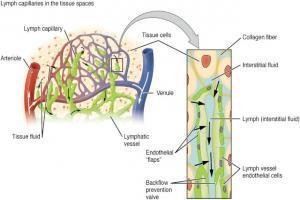
A lymphatic drainage massage is a gentle massage of your tissues intended to aid in the circulation of lymph fluids within your body. Lymph is a protein-rich fluid that circulates in lymph vessels throughout your body. It collects bacteria, viruses, and waste and transports them to your lymph nodes. The liquid is then filtered by your lymph nodes to remove impurities from your body. A massage is usually done with light pressure and long, gentle strokes along the skin to help the movement of lymph fluid throughout your body.
Thai Massage Therapy
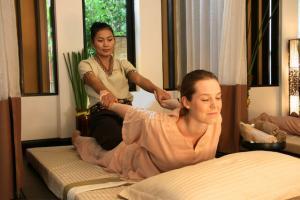
The therapist uses their body to help guide the client into various positions during a Thai massage. This type of massage includes joint mobilization, muscle compression, and acupressure.
Hot Stone Massage
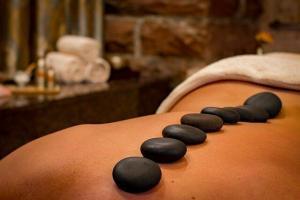
Hot stones, usually used in conjunction with other massage techniques, can be quite soothing and relaxing because they transmit heat deep into the body. For this type of massage, the therapist places warmed stones on specific body areas, such as your acupressure points. The stones can either be used as massage tools or left in place for a short time.
Cupping with Massage Therapy

Cupping is a traditional Chinese medicine (TCM) therapy used to remove stagnation and stimulate the flow of qi (chi). Qi is the free flow of vital energy that circulates through the body and the world around us; when this flow is disrupted or disturbed, it can cause stagnation (blockages) or imbalances in the body.
Placing cups, usually made of glass or plastic, on the skin and creating a vacuum is a therapeutic cupping treatment. This vacuum helps draw tissue up into the cup, and the practitioner may do this with or without movement. Cupping may help stimulate healing by increasing blood flow loosening the fascia or various connective tissues. It works similarly to how deep tissue massage can be used to break up scar tissue and relieve pain.
• May Help Reduce Anxiety
• Increases Blood Circulation
• Encourages Tissues to Release Toxins
• Myofascial Pain Syndrome
• Good for Nervous System
• Promotes Relaxation
• Provides Pain Relief
Reflexology (Currently Not Available)

Hand, thumb, and finger techniques are used in reflexology to stimulate specific foot areas. These specific areas are thought to correspond to various parts of the body. As a result, the massage is expected to promote health and overall well-being.
Health Benefits of Therapeutic Massage Therapy?
Our wellness center's Moncton massage therapy services provide health benefits beyond simple relaxation. Here are a few examples of health issues that may benefit from therapeutic massage. Please consult your doctor before using massage therapy to treat any medical condition.
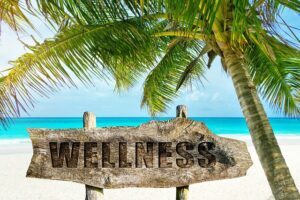
Repetitive Muscle Strain Injuries: It's estimated that one in every ten Canadians suffers from repetitive strain injuries, with half of these being work-related. That equates to approximately 15,000 people in the Greater Moncton area suffering from a repetitive strain injury! Massage therapy can usually help by increasing blood flow and improving mobility.
Back Pain: Numerous studies have shown that massage therapy effectively provides upper and lower back pain relief.
Headache: Another type of pain we refer to as headaches or migraines can respond to massage therapy. Some studies suggest that massage therapy can help reduce the number of migraines and improve sleep.
Depression: Massage therapy may help reduce depression, according to a review of 17 clinical trials. However, it was no more effective than providing a calming environment and deep breathing exercises for generalized anxiety disorder.
Osteoarthritis: In a clinical trial examining the efficacy of Swedish massage for knee osteoarthritis, participants who received a 60-minute massage one or two times per week improved in pain, stiffness, and function. There was no such difference observed in the control group.
Cancer: Massage can promote relaxation and reduce cancer symptoms or side effects of treatment when used in conjunction with traditional, Western medicine. It may aid in relieving pain, swelling, fatigue, nausea, or depression and improving immune system function. However, there are certain areas that a massage therapist should avoid in a cancer patient and times when massage should be avoided entirely. Please consult with your doctor, physician, or health specialist before starting massage therapy sessions if you have or suspect cancer.
